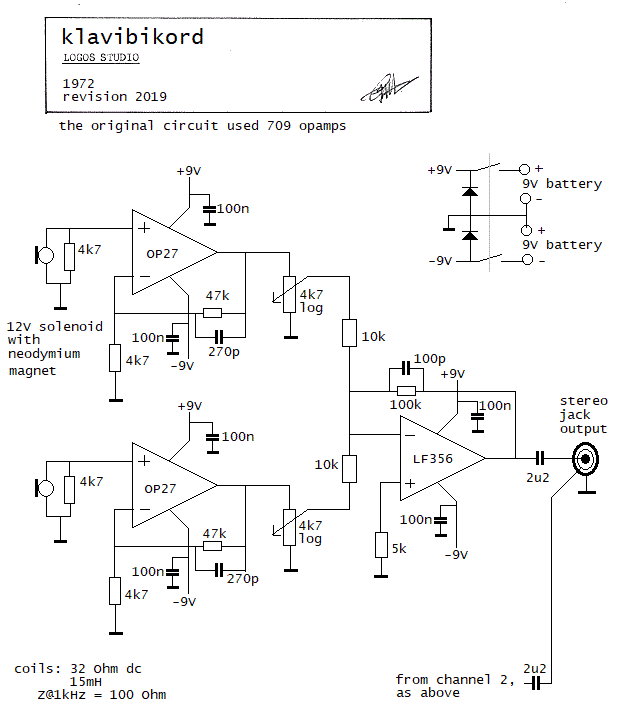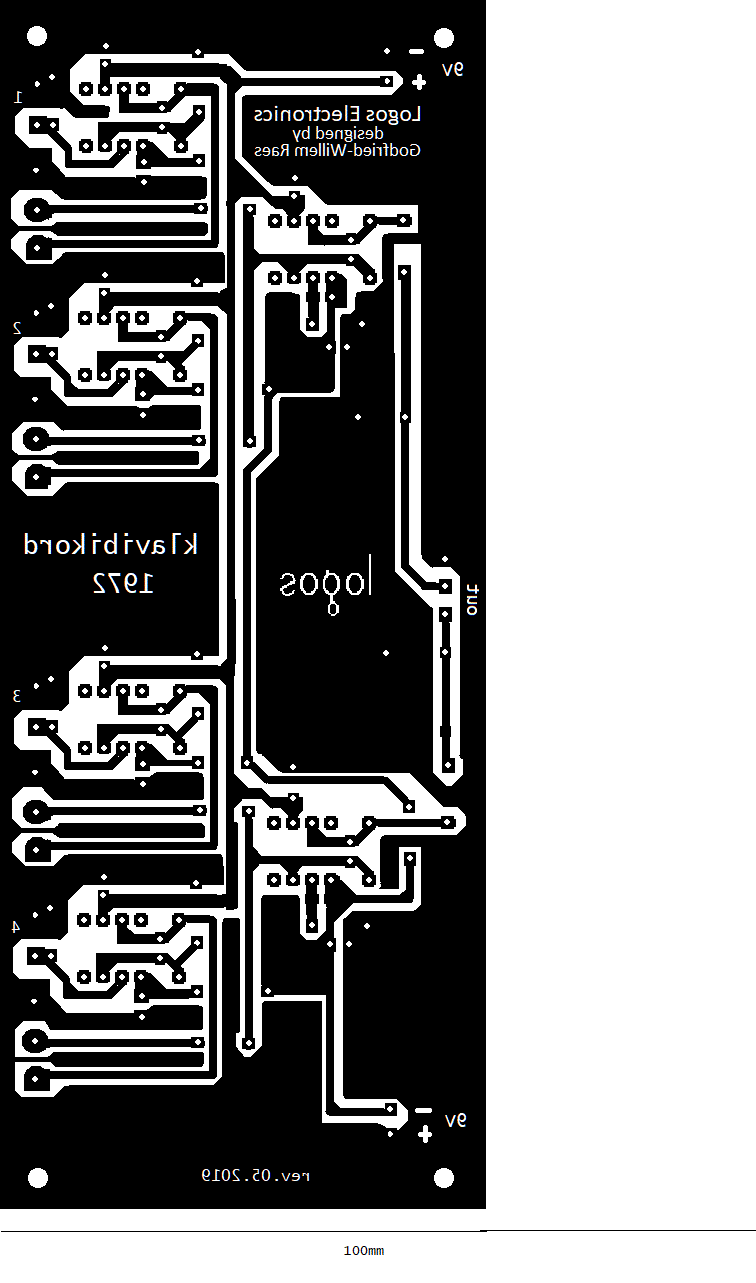Klavibikord
an amplified experimental linear clavichord with two strings
by
Godfried-Willem Raes
1972
In 1970 we demolished an old upright piano, to save its strings and soundboard to be played flat as a 'piano-harp'. Thus we were left with a now detached piano keyboard. This gave us the idea to turn this keyboard into a key-operated monochord, by just attaching metal bridges over the key pushers on the back of the keyboard. We used a single unwound piano string. Thus we had a keyed monochord whereby the interval divisions accord to a linear scale. Two electromagnetic microphones (pick-ups) were placed at each end of the string, the signal preamplified and mixed. Two extra pickups were mounted at 1/3 and 2/3 of the string length as well thus even 3-note chords could be played. This instrument was used extensively in the first years of the logos group. However, the instrument turned out to be too large, too heavy and clumsy in many respects. Transportation was always a problem.
Than in 1972, after disassembling a Bontempi toy reed organ, we found ourselves left with a small chord-key mechanism. This gave rise to the construction of a much smaller version of the klavimonochord: the klavibichord. It used two strings, one thick, one thin. One string is lead above the key mechanism, the other below it on the other side of the pivot point. The instrument was equiped with four electromagnetic pick-ups and a 4-channel mixer with a 2-channel output. It was used in the Logos group and later in the 'Ghent Philharmonic' until 1978.
In 2019 we digged the instrument up from our storage and decided
to bring it back to playing condition. This is a picture of the instrument in
the state is was found before restoration :
A front panel was originally planned but never made, as it was not essential
for playing. But, some other essential parts were missing. The bridges were
lost, an easy thing to get fixed. Next thing to be done was replacing the pick-ups
with new ones, as apparently the original pick-ups had lost all magnetism and
thus the signal level was found to be very reduced. Here are some details of
the original pick-up coils:
For their replacement, we used
four Japanese 12V pull solenoids, modified to open the magnetic circuit. The
moving anchor was taken out, disposed off and replaced with very strong neodymium
magnets, 8 mm in diameter and 35 mm long, glued in place. The preamp and mixing
circuits -the instrument didn't even had a properly designed circuit board,
all components being mounted with flying wires- were found to be in a very bad
shape as well (lots of hum and noise...) and thus we replaced them with functionally
equivalent and improved modern circuitry. In general all impedances were lowered
by a factor twenty throughout the circuitry, thus reducing hum to a bare minimum.
Here is the circuit:  A new printed circuit board for this circuit was made as well. Here is the PCB
design at 200%: (the real sizes are 160 mm x 65 mm):
A new printed circuit board for this circuit was made as well. Here is the PCB
design at 200%: (the real sizes are 160 mm x 65 mm):  We
did not change the original powering: it still needs two 9V batteries. The main
reason for leaving this aspect of the original design untouched, being that
the presence of a mains-operated power supply, due to the unavoidable transformer,
would introduce quite some hum on the pick-up coils. The restoration was fully
finished by mid may 2019. The klavibikord is now back to playing condition.
Here are some first pictures taken during the restoration works::
We
did not change the original powering: it still needs two 9V batteries. The main
reason for leaving this aspect of the original design untouched, being that
the presence of a mains-operated power supply, due to the unavoidable transformer,
would introduce quite some hum on the pick-up coils. The restoration was fully
finished by mid may 2019. The klavibikord is now back to playing condition.
Here are some first pictures taken during the restoration works::
A few details
left to be done: felt replacement on the tangent fallback side and height adjustment
feet on the backside. Although the tuning is quite free, we normally had the
two strings tuned an octave apart.
Here are some pictures of the instrument, now fully restored:
dr.Godfried-Willem Raes
Maintenance and construction notes:
First published on the web: 07.05.2019 by dr.Godfried-Willem Raes
Last update:2019-08-06